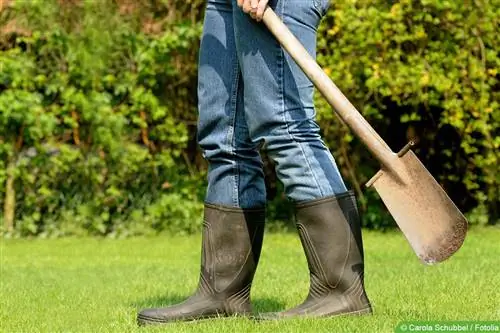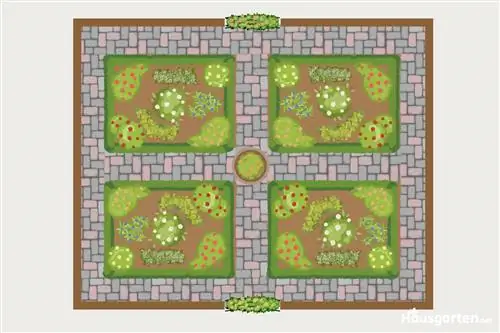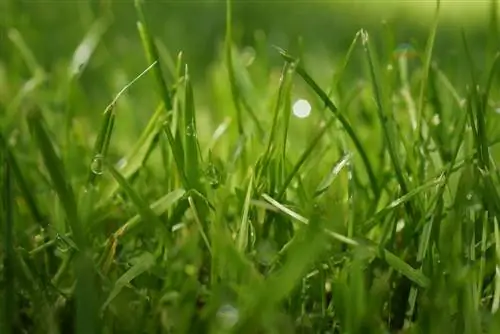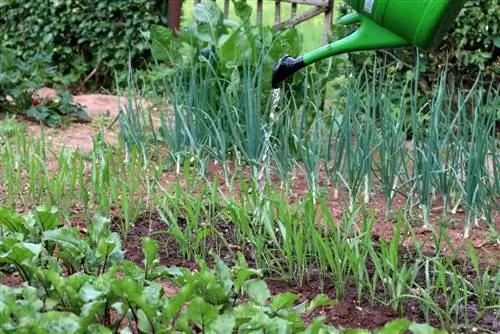- Author admin [email protected].
- Public 2023-12-17 03:39.
- Last modified 2025-01-24 12:45.
The pH value in the soil is made up of the acid and alkaline content and can vary extremely. The level of this value depends on many factors and can also be actively changed by the gardener if necessary. Plants are naturally perfectly adapted to the pH values of their original locations and then also need this in their new home.
Peat
Peat is a traditional method that can be used to lower the pH value in the soil. This material has acidic properties and can be worked into the soil over a longer period of time. However, peat is extracted from the moor, a very sensitive ecosystem that is gradually destroyed as it is mined. The extraction of this sediment negatively impacts important habitats, and the flora and fauna there suffer extremely.
- Work peat into the soil over several days to weeks
- However, mining of peat destroys the moor ecosystem
- Better to use more environmentally friendly alternatives
Compost from oak leaves
Compost made from oak leaves is also suitable for lowering the pH value in the soil. This is easy to make, especially if there is an oak tree in your garden. In addition, oak trees grow in many parks and German forests.
- Pure oak leaves have an extremely acidic pH value
- As it decomposes, it gradually begins to release even more acid
- Even small amounts have a strong effect on the previous pH value
- Has no negative impact on the soil
- Make sure the compost is clean, only use oak leaves
Coniferous earth
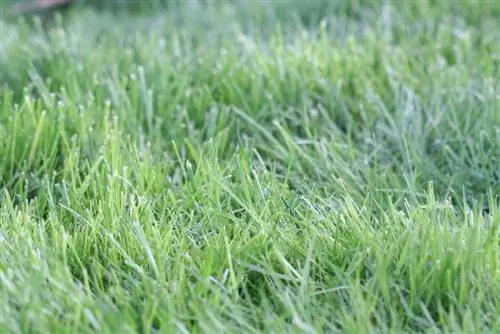
It is also very easy to use coniferous soil, i.e. the soil from the immediate vicinity of coniferous trees. Conifers can also acidify the soil and thereby sustainably reduce a pH value that is too high. To compensate, the garden soil from the processed planting site can then be filled into the excavated area around the conifer.
- Dig up coniferous soil around the trunk
- Then work these into the desired place
- Afterwards measure the pH value regularly
- Repeat the process until the required value is reached
Iron sulfate
Iron sulfate is a good alternative to peat and can be used especially in extremely compacted clay soils. This is not an organic substance, rather iron sulfate is a s alt of sulfuric acid.
- Iron sulfate works extremely quickly in the soil
- Promptly develops the required acid
- pH value can be visibly reduced within two weeks
Tip:
Be careful when handling iron sulfate, this substance leaves unsightly rust stains on clothing, surfaces and paths in the garden.
Grape pomace
Grape pomace is the solid residue that occurs when grapes are pressed to make wine. These plant residues are ideal for lowering soil pH. Since the pomace is not produced artificially, it can release its acid to the new location without any problems.
- Natural material, contains pure grape acid and fermentants
- Destroys - no important microorganisms in the soil
Tip:
Grape pomace can be obtained from winemakers.
Mulch layer
A layer of mulch, either made yourself or purchased from specialist retailers, is also suitable for lowering the pH value. This layer of mulch not only changes the pH value, but also fertilizes the soil. In this way, the he althy growth of the plants is sustainably promoted. The properties of conifers play an important role and are also effective through the wood.
- Consists of a mixture of crushed softwood
- Different softwoods can be used
- Enhanced effect by adding crushed oak leaves
- Apply a layer of mulch five centimeters thick
- Incorporate additional organic nitrogen fertilizer
- Horn shavings are well suited for this
Coffee grounds
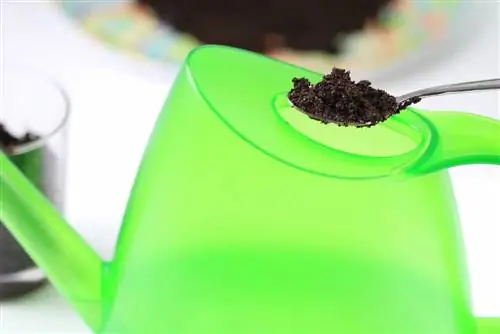
An effective mixture can also be made based on coffee grounds that lowers the pH value. Since most households drink coffee every day, this material is easy to obtain. By adding other organic materials, the plants are also supplied with vital nutrients.
- Collecting used coffee
- Mix with shredded softwood and the associated needles
- Also add finely chopped oak leaves
- Add nitrogen-based fertilizer to enhance effect
Sulfur
Pure sulfur is an effective element for lowering pH values, which is also used in heavily compacted soils.
- Sulfur works over a period of several months
- Incorporate in the previous season
- Soil pH value is continuously reduced
- The following year the soil is immediately ready for planting
Watering with rainwater
The pH value of alkaline soils can be reduced not only with acidic fertilizer, but also by watering with rainwater. This usually has an acidic pH value and is also much more digestible for the plants than the water from the tap, which is often too hard.
- Rainwater usually has a pH of 5-6
- Measure over a period of several weeks before use
- pH value may vary regionally
- Important factors are rain in the city or in the country
- Collect rainwater in containers for collection, e.g. B. large barrels or ponds
- Consistent watering is required to lower the value
Applying methods
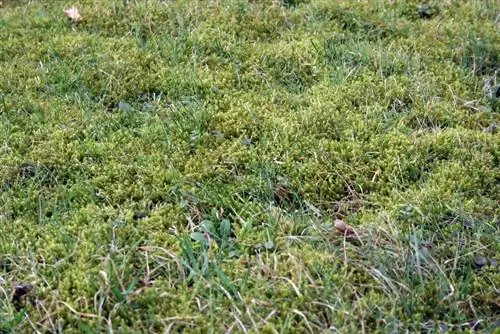
When applying fertilizer and other products to lower the pH value, the soil should not be completely dug up. Mechanical and machine processing destroys the soil structure and life in the soil. It can take weeks or even months until a he althy balance is reestablished.
- Loose the soil superficially before spreading
- Work only the top layer of soil with a hoe, claw or rake
- Carefully insert the digging fork into the soil and move it back and forth
- Don't disturb the earth's layers too much
- Then gradually incorporate the product
Indicator plants
An important characteristic of a soil with a pH value that is too high are the indicator plants. Since most plants have adapted to certain values, they spread widely on their own in an ideal location. Perennials in particular then form large and he althy clumps without the gardener having to intervene to help. The alkaline soil is characterized primarily by a lot of lime, which not all plant species tolerate equally well.
- Excessive growth of certain plants is an indication of alkaline pH soil values
- Basic soils are preferred by dandelion, field bindweed, pasqueflower, nettle, field delphinium, corn poppy and coltsfoot
- Sage, chicory, dead nettle, marigold, cranesbill and liverwort also feel at home there
- Typical plants for lime-rich soils are: spurge, toadflax, hare, goose thistle, speedwell and sickle carrot
- Chamomile is an indicator of neutral pH values and compaction in the soil
- Indicator plants for acidic soils are: sorrel, pansies, sorrel and horsetail
- Blueberries and holly also thrive in acidic soil
- Root plants such as rhododendrons, heather and lavender heather rely on low pH values


